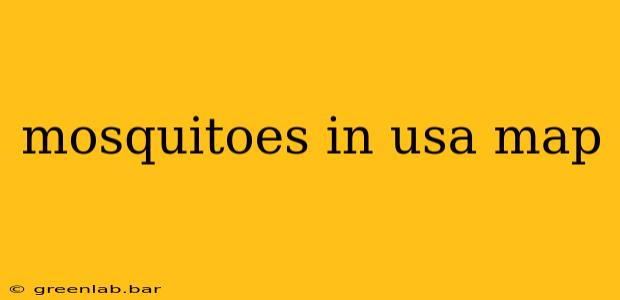Mosquitoes are a ubiquitous part of the American summer, but their prevalence varies dramatically across the country. Understanding the regional distribution of mosquito species and their associated risks is crucial for both public health and personal safety. This guide provides a comprehensive overview of mosquito activity in the USA, focusing on regional variations and the diseases they transmit.
Understanding the Mosquito Threat in the US
The United States is home to over 170 mosquito species, each with its own preferred habitat, biting habits, and disease-carrying potential. While a complete, interactive map showing every species' distribution is currently unavailable due to the sheer volume of data and ongoing research, we can examine regional trends and highlight areas of particular concern.
Factors Affecting Mosquito Populations
Several factors influence mosquito populations and their geographic distribution:
- Climate: Temperature, humidity, and rainfall directly impact mosquito breeding cycles and survival rates. Warmer, wetter regions generally support larger populations.
- Water sources: Mosquitoes require standing water to breed. Areas with abundant stagnant water, such as marshes, swamps, and poorly maintained drainage systems, tend to have higher mosquito densities.
- Human activity: Urbanization and agricultural practices can inadvertently create ideal breeding grounds. Untreated pools, irrigation systems, and even discarded containers can become mosquito havens.
- Vegetation: Certain types of vegetation provide resting and breeding sites for mosquitoes. Dense vegetation can also hinder effective mosquito control efforts.
Regional Mosquito Activity & Disease Risk
While a detailed state-by-state map isn't practically feasible within this format, let's explore regional trends:
The South: A High-Risk Zone
States in the southern US, including Florida, Louisiana, Texas, and Mississippi, generally experience the highest mosquito activity and disease risk. The warm, humid climate and abundant wetlands create ideal breeding conditions for many species, including those that transmit diseases like:
- West Nile Virus: Widespread across the South, particularly during summer and early fall.
- Zika Virus: While less prevalent currently, the risk remains, particularly in areas with standing water.
- Eastern Equine Encephalitis (EEE): A more serious, though less common, viral infection primarily affecting horses, but also humans.
- Dengue Fever: Sporadic outbreaks have been reported in southern states in recent years.
The Northeast: Variable Risk
The Northeast exhibits variable mosquito activity. Coastal areas and regions with ample wetlands experience higher densities, while more mountainous or arid areas tend to have lower populations. Mosquito-borne illnesses like West Nile Virus are still a concern in this region.
The Midwest: A Moderate Risk
The Midwest's mosquito population varies based on rainfall and proximity to water sources. States like Illinois and Ohio have experienced outbreaks of West Nile Virus in the past.
The West: Generally Lower Risk, But Localized Outbreaks
The western US typically has lower overall mosquito populations compared to the East and South. However, localized outbreaks can occur in areas with irrigated agriculture or standing water. The West Nile Virus remains a potential concern in certain regions.
Protecting Yourself from Mosquitoes
Regardless of location, taking proactive steps to protect yourself from mosquito bites is crucial:
- Use insect repellent: Choose a repellent containing DEET, picaridin, IR3535, oil of lemon eucalyptus (OLE), or para-menthane-diol (PMD).
- Wear long sleeves and pants: Especially during dawn and dusk, peak mosquito biting times.
- Eliminate standing water: Empty any containers that collect water around your home.
- Maintain screens on windows and doors: This prevents mosquitoes from entering your home.
This information is intended for general knowledge and awareness. Consult your local health department or CDC resources for the most up-to-date information on mosquito activity and disease risk in your specific area. The information provided here is not a substitute for professional medical advice.

